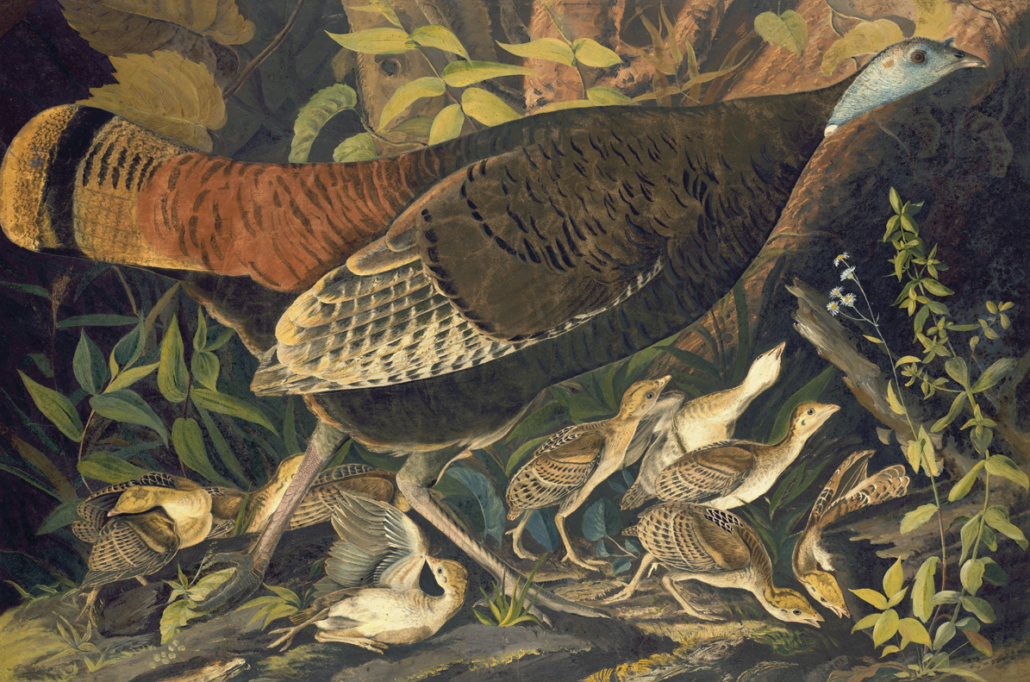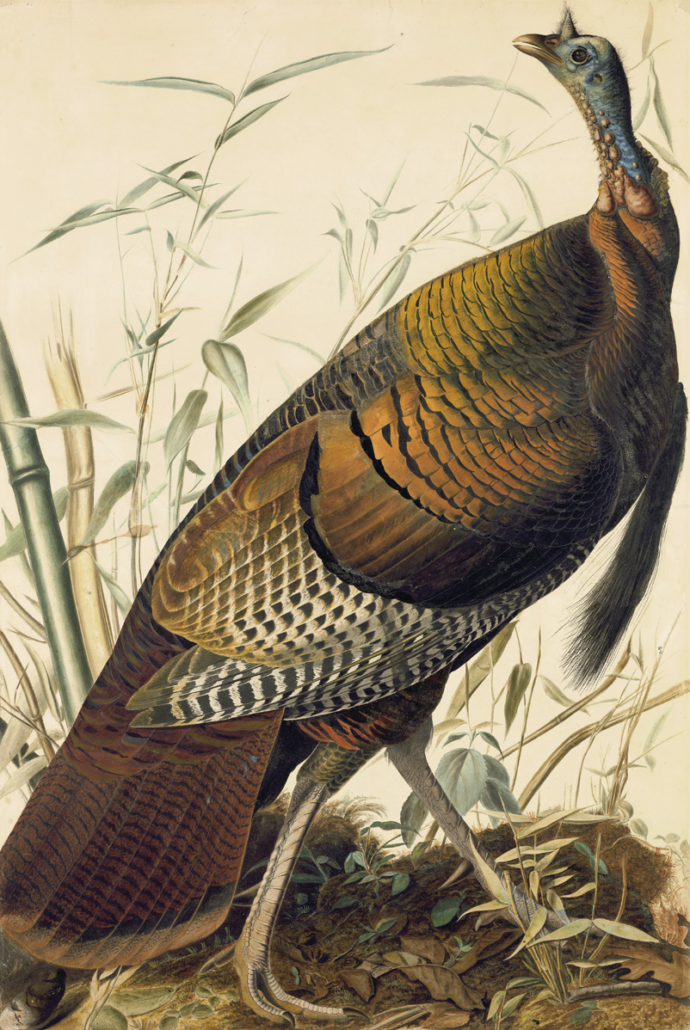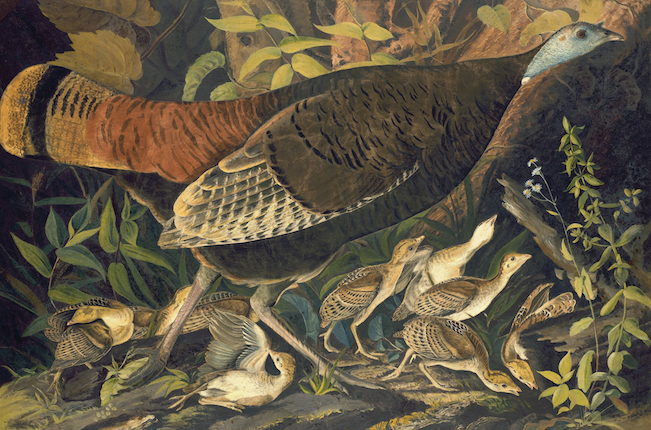
NEW YORK – This fall, the New-York Historical Society will welcome visitors to Audubon’s Birds of America Gallery, a new gallery celebrating the Museum’s holdings of work by legendary artist John James Audubon, the world’s largest collection of Auduboniana. Each month a different watercolor model for The Birds of America will be displayed, paired with its corresponding plate from the double-elephant-folio series engraved by Robert Havell Jr. On November 10, just in time for Thanksgiving, the Wild Turkey will inaugurate the space. It will be the first time since 1827 that Audubon’s watercolor model, the engraved copper plate, and a print of plate 1 from The Birds of America will be reunited. The gallery—offering the only opportunity to see Audubon’s original watercolors with their related prints—is curated by Dr. Roberta J.M. Olson, curator of drawings.
“In a stroke of marketing genius,” Roberta Olson noted, “Audubon organized his magnum opus not by taxonomy, which was traditional, but according to his aesthetic judgment and which watercolors were ready for engraving. He believed this organic order resembled that of nature. It was also far more interesting for his subscribers, who received their prints in fascicles (groups) of five prints each—usually one large, one medium, and three small, all on double-elephant-folio paper.”
From a young age, Audubon was obsessed by one idea: to observe, record, and publish images of all the birds of North America “with a semblance of life.” People recognized Audubon’s portrayals as both important natural history documents and dazzling works of art. Audubon was one of the nation’s greatest watercolorists, and he depicted birds in novel ways. He was the first person to show them lifesize and interacting with one another in characteristic behaviors, and he also represented different sexes, ages, and seasonal plumages of the same species. Audubon’s images are valued not only because they include some species that have become extinct, but also because they call attention to the need for the conservation of birds, wildlife, and their habitats.
In 1863, New-York Historical purchased all of Audubon’s 435 watercolor models for The Birds of America from his widow, Lucy Bakewell Audubon. New-York Historical will share these national treasures with the public in the new dedicated gallery. Audubon’s watercolor models and their corresponding hand-colored engravings will rotate each month, allowing these light-sensitive works to be preserved for future generations. Other works from the collection will illuminate Audubon’s process, and bird calls and songs courtesy of The Macaulay Library at the Cornell Lab of Ornithology will animate the environment.

The inaugural centerpiece will be the season-appropriate Wild Turkey: Audubon’s watercolor, together with the engraving and the copper plate on loan from the American Museum of Natural History. Audubon, who agreed with Benjamin Franklin that the turkey should have been selected as America’s national symbol, assigned it the place of honor as the first plate of The Birds of America. “The Gobbler” became his most famous image, and he used it for his visiting card and his seal—engraved with the motto “AMERICA MY COUNTRY.” For the initial exhibition, Audubon’s watercolor of the female turkey with her poults (chicks) joins the flock. Following the Wild Turkey, visitors can expect to see Audubon’s birds in the order that they were engraved, starting with the Yellow-billed Cuckoo.
Each rotation will also report on the conservation history and status of the bird, as well as provide data about the species. This information will also be featured on the exhibition website as the “Bird-of-the-Month”: http://www.nyhistory.org/exhibitions/audubons-birds-america-focus-gallery
Exhibitions at the New-York Historical Society are made possible by Dr. Agnes Hsu-Tang and Oscar Tang, the Saunders Trust for American History, and the New York State Council on the Arts with the support of Governor Andrew Cuomo and the New York State Legislature. WNET is the media sponsor.
About the New-York Historical Society:
The New-York Historical Society, one of America’s preeminent cultural institutions, is dedicated to fostering research and presenting history and art exhibitions and public programs that reveal the dynamism of history and its influence on the world of today. Founded in 1804, New-York Historical has a mission to explore the richly layered history of New York City and State and the country, and to serve as a national forum for the discussion of issues surrounding the making and meaning of history.



